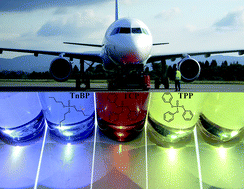Organophosphates in aircraft cabin and cockpit air—method development and measurements of contaminants
Abstract
Methods for measurements and the potential for occupational exposure to organophosphates (OPs) originating from turbine and hydraulic oils among flying personnel in the aviation industry are described. Different sampling methods were applied, including active within-day methods for OPs and VOCs, newly developed passive long-term sample methods (deposition of OPs to wipe surface areas and to activated charcoal cloths), and measurements of OPs in high-efficiency particulate air (HEPA) recirculation filters (n = 6). In total, 95 and 72 within-day OP and VOC samples, respectively, have been collected during 47 flights in six different models of turbine jet engine, propeller and helicopter aircrafts (n = 40). In general, the OP air levels from the within-day samples were low. The most relevant OP in this regard originating from turbine and engine oils,


 Please wait while we load your content...
Please wait while we load your content...